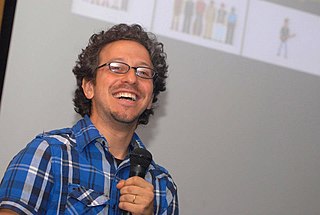Selected publications
Genest, W., Hammond, R. & Carpenter, R. H. S. The random dot tachistogram: a novel task that elucidates the functional architecture of decision. Scientific Reports 2016; DOI: 10.1038/srep30787, 1-11
Noorani, I. & Carpenter, R. H. S. The LATER model of reaction time and decision. Neuroscience and Biobehavioral Reviews 2016; 64, 229-251.
Noorani, I., & Carpenter, R.H.S. Antisaccades as decisions: LATER model predicts latency distributions and error responses. European Journal of Neuroscience, 2013: 37 330-338
Carpenter, R. H. S., Reddi, B. A. J. Neurophysiology: A Conceptual Approach. 5th edition. London: Hodder, 2012.
Noorani, I, Gao, M. J., Pearson, B. C. & Carpenter, R. H. S. Predicting the timing of wrong decisions. Experimental Brain Research 2011; 209: 587-598
Anderson, A. J. & Carpenter, R. H. S. Saccadic latency in deterministic environments: getting back on track after the unexpected happens. Journal of Vision. 2010; 10:14 12
Carpenter, R. H. S., Reddi, B. A. J., & Anderson, A. J. A simple two-stage model predicts response time distributions. Journal of Physiology 2009. 587, 4051-4062.
Story, G. W. & Carpenter, R. H. S. Dual LATER-unit model predicts saccadic reaction time distributions in gap, step and appearance tasks. Experimental Brain Research. 2009; 193:287-296
Roos, J. C. P., Calandrini, D. M. & Carpenter, R. H. S. A single mechanism for the timing of spontaneous and evoked saccades. Experimental Brain Research. 2008;187:283-93.
Temel, Y., Visser-Vandewalle, V. & Carpenter, R. H. S. Saccadic latency during electrical stimulation of the human subthalamic nucleus. Current Biology. 2008;18:R412-4.
Oswal, A., Ogden, M. & Carpenter, R. H. S. The time-course of stimulus expectation in a saccadic decision task. Journal of Neurophysiology. 2007;97:2722-30.
Anderson, A. J. & Carpenter, R. H. S. The effect of stimuli that isolate S-cones on early saccades and the gap effect. Proceedings of the Royal Society B. 2007; 275:335-44.
Taylor, M. J., Carpenter, R. H. S. & Anderson, A. J. A noisy transform predicts saccadic and manual reaction times to changes in contrast. Journal of Physiology 2006; 573: 241-251
Carpenter, R. H. S. & Anderson, A. J. The death of Schrödinger's cat and of consciousness-based quantum wave-function collapse. Annales de la Fondation Louis de Broglie 2006; 31: 1-8
Sinha, N., Brown, J. T. G. & Carpenter, R. H. S. Task switching as a two-stage decision process. Journal of Neurophysiology 2006; 95: 3146-3153.
McDonald, S. A., Carpenter, R. H. S. & Shillcock R. C. An anatomically-constrained, stochastic model of eye movement control in reading. Psychological Review 2005; 112: 814-840.
Carpenter, R. H. S. Homeostasis: a plea for a unified approach. Advances in Physiology Education 2004; 28: S180-187.
Carpenter, R. H. S. Contrast, probability and saccadic latency: evidence for independence of detection and decision. Current Biology 2004; 14: 1576-1580.
Reddi, B. A. J. & Carpenter, R. H. S. Venous excess: a new approach to cardiovascular control and its teaching. Journal of Applied Physiology 2004; 98: 356-364.
Nouraei, S. A. R., de Pennington, N., Jones, J. G. & Carpenter, R. H. S. Dose-related effect of sevoflurane sedation on the higher control of eye movements and decision-making. British Journal of Anaesthesia 2003; 91: 175-83
Reddi, B. A. J. & Asrress, K. N. & Carpenter, R. H. S. Accuracy, information and response time in a saccadic decision task. Journal of Neurophysiology 2003; 90: 3538-46
Leach, J. C. D. & Carpenter, R. H. S. Saccadic choice with asynchronous targets: evidence for independent randomisation. Vision Research 2001; 41: 3437-45.
Carpenter, R. H. S. Express saccades: is bimodality a result of the order of stimulus presentation? Vision Research 2001; 41: 1145-1151.
Reddi, B. A. J. & Carpenter, R. H. S. The influence of urgency on decision time. Nature Neuroscience 2000; 3: 827-831.
Carpenter, R. H. S. A neural mechanism that randomises behaviour. Journal of Consciousness Studies 1999; 6: 13-22.
Carpenter, R. H. S, & Kinsler, V. Saccadic eye movements while reading music. Vision Research 1995; 35: 1447-1458.
Carpenter, R. H. S. & Williams, M. L. L. Neural computation of log likelihood in the control of saccadic eye movements. Nature 1995; 377: 59-62.
Carpenter, R. H. S. Movements of the Eyes. 2nd edition. London: Pion, 1988.
Carpenter, R. H. S. Cerebellectomy and the transfer-function of the vestibulo-ocular reflex in the decerebrate cat. Proceedings of the Royal Society B 1972; 181: 353-374









